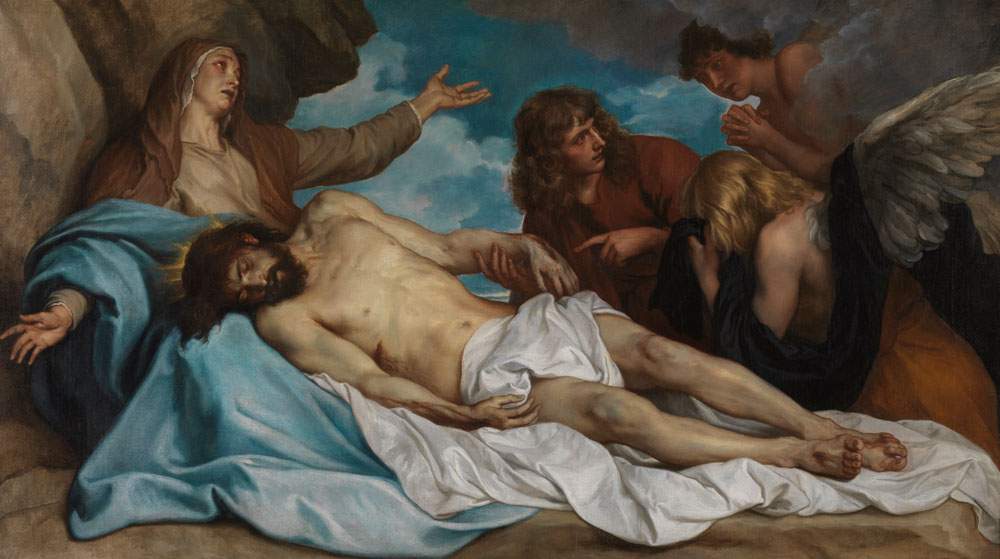From September 5, 2019 to March 1, 2020, theDoge’s Apartment in the Doge’s Palace in Venice is hosting the exhibition From Titian to Rubens. Masterpieces from Antwerp and Other Flemish Collections, curated by Ben van Beneden, director Rubenshuis, and the scientific direction of Gabriella Belli, director Fondazione Musei Civici di Venezia.
Through this exhibition it is intended to restore the cultural and economic ferment of Europe between the 16th and 17th centuries. Thus, more than 140 works, including some absent from the lagoon for centuries and some never before exhibited to the public, from the most prestigious public and private collections in Antwerp and Flanders and from other Italian and international museums and collections, are on display in order to narrate the richness, complexity and relationships of an area straddling two centuries.
Peter Paul Rubens, among the principal artists who left Antwerp for Italy and contributed to the spread of Renaissance knowledge in northern Europe, is featured in the exhibition with 12 paintings, including the Portrait of a Young Woman with a Chain, on public display for the first time, and the monumental Saint Francis of Assisi Receives the Stigmata. Heir to Rubens was van Dyck, on view with seven works, such as the Study for a Portrait of a High Official of Brussels and the Portrait of Johannes Malderus, also on public view for the first time.
Also featured in the exhibition is the Portrait of a Lady with Daughter, an unfinished work by Titian that is assumed to depict the beloved Milia with their daughter.
An important nucleus of works belongs to the hand of Maerten de Vos, a painter who, after spending long periods in Rome and Venice, built a solid reputation depicting historical subjects: his are Study of a Man’s Head with Beard and The Slander of Apelles. Other tronies, as the head studies were called, belong to de Vos’s master Frans Floris and to his contemporaries such as Willem Key and Adriaen Thomasz Key; the latter, while trained in history painting, devoted themselves to producing portraits of great quality.
Other significant paintings present are Martyrdom of St. Apollonia, made in 1628 by Jacques Jordaens, and Cupid and Psyche, a masterpiece by the same artist considered one of the greatest masterpieces of Flemish art.
Alongside the big names, in the 16th century other artists traveled, stayed, and were active in cities across Europe: many were not originally from Antwerp, but converged from other cities, such as Bruges, Ghent, and Brussels. These artists include Theodoor van Loon, on display with a splendid Pieta and a Holy Family; Michaelina Wautier with a Portrait of Two Maidens as St. Agnes and St. Dorothy; Clara Peeters with a Still Life with Cheese and Butter, Lobsters, Shrimp, Bread and Wine; and a Still Life with Fish, Lobsters, Shrimp and Oysters.
Also in the early sixteenth century Venetian master glassmakers opened their first workshops: some of the paintings depict Venetian-style glasses, bottles and vases, glass à la façon de Venise, such as the Still Life of Flowers in a Vase by Daniel Seghers and the Still Life of Fruit with a Goblet à la façon de Venise by Jan Davidsz De Heem, as well as thirty highly prized pieces from the sixteenth and seventeenth centuries from the collections of the Murano Glass Museum.
A separate chapter deserves the return to Venice after nearly two hundred years of the altarpiece that Tintoretto painted for the church of San Geminiano: The Angel Announces Martyrdom to St. Catherine of Alexandria, the so-called David Bowie Tintoretto, since the painting was purchased by the rock star in the 1980s.
Also worth mentioning is the fact that in the homes of wealthy families were harpsichords and virginal instruments produced in Antwerp workshops; the most famous family was the Ruckers-Couchet family, which introduced important innovative elements and standardization in the production of instruments that reached every corner of Europe.
Thus a number of musical instruments are on display in the exhibition, including wind instruments made by the Bassanos who settled in Venice as players and instrument makers in the first half of the 16th century. Linked to this sphere was the printing of music books, and in general the city of Antwerp played a prominent role in the printing of books on any subject. The most famous Antwerp publisher of all was Cristophe Plantin.
The exhibition is organized by the Fondazione Musei Civici di Venezia in collaboration with the Flemish Community, the City of Antwerp and VisitFlanders.
For info: https://palazzoducale.visitmuve.it/
Image: Anthony van Dyck, The Lamentation over the Dead Christ (Oil on canvas, 115 x 208 cm; Antwerp, Royal Museum of Fine Arts Antwerp (KMSKA)) © Royal Museum of Fine Arts Antwerp
www.lukasweb.be - Art in Flanders, photo Hugo Maertens
 |
| In the Doge's Palace in Venice a major exhibition on Flemish masterpieces, from Titian to Rubens |
Warning: the translation into English of the original Italian article was created using automatic tools. We undertake to review all articles, but we do not guarantee the total absence of inaccuracies in the translation due to the program. You can find the original by clicking on the ITA button. If you find any mistake,please contact us.